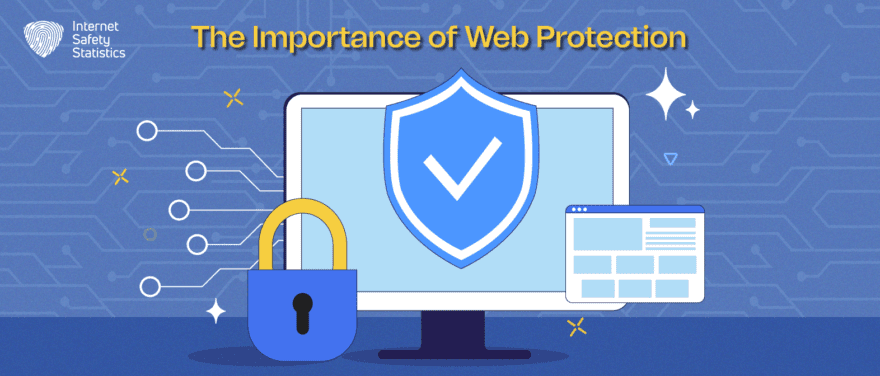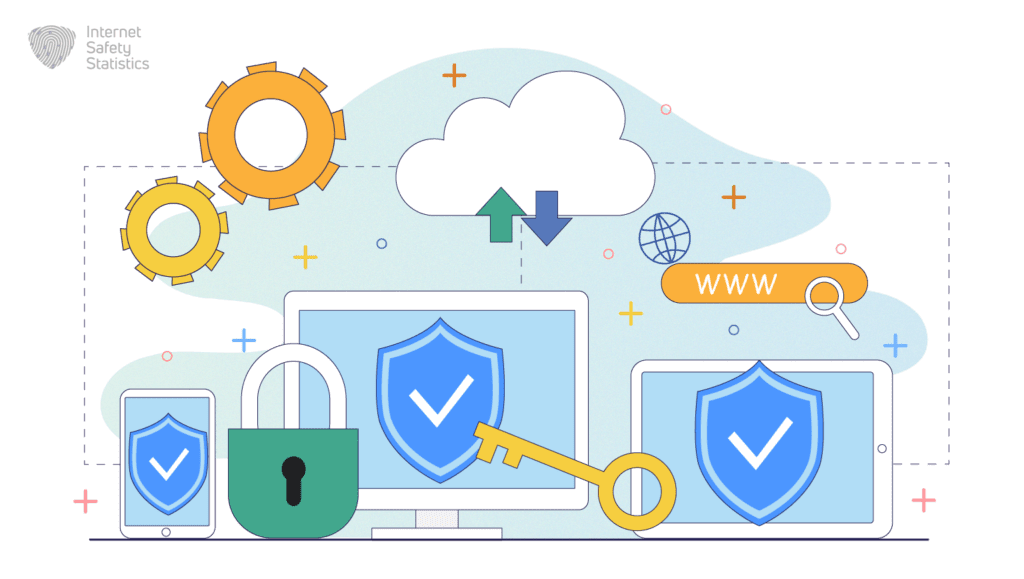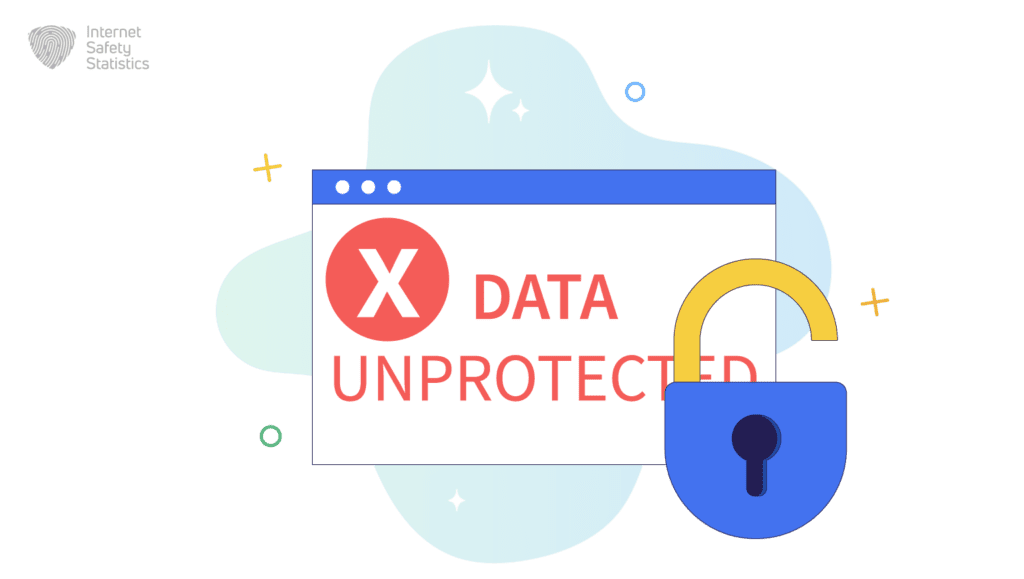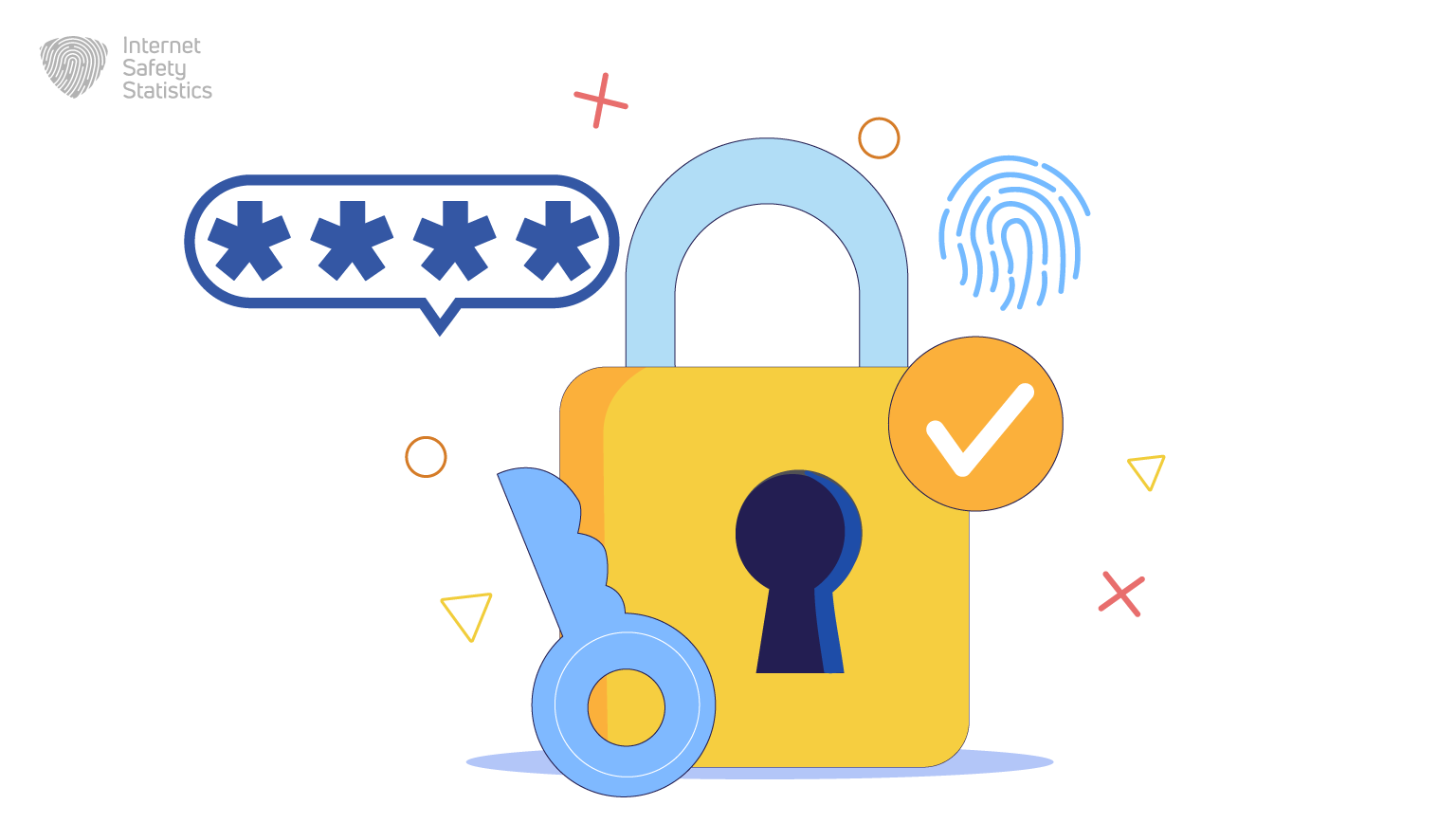
In today’s interconnected world, where virtually every aspect of our lives is intertwined with the digital realm, the concept of web protection has become more pertinent than ever before. With the proliferation of online activities ranging from e-commerce transactions to social networking, individuals and businesses alike are increasingly exposed to a myriad of cyber threats. These threats, ranging from phishing scams to sophisticated malware attacks, pose a significant risk to both personal and organisational security. Understanding the significance of web protection is paramount in navigating the complex digital landscape safely and securely.
Overview of Common Online Threats
In today’s digital ecosystem, individuals and organisations encounter a diverse array of online threats that can compromise their security and privacy. Among the most prevalent threats are malware, phishing, and ransomware. Malware, short for malicious software, encompasses various forms such as viruses, worms, Trojans, and spyware. These malicious programs are designed to infiltrate systems, steal sensitive data, or cause damage to computer networks.
Phishing attacks involve fraudulent attempts to obtain sensitive information, such as usernames, passwords, and financial details, by masquerading as trustworthy entities in electronic communication. These attacks often employ deceptive emails, websites, or messages to trick individuals into divulging confidential information.
Ransomware poses another significant threat, encrypting files or locking users out of their systems until a ransom is paid. This type of malware can severely disrupt operations and compromise sensitive data, leading to financial losses and reputational damage.
Impact of Cyber Threats on Individuals and Businesses
The ramifications of cyber threats extend far beyond the digital realm, impacting individuals and businesses on multiple fronts. For individuals, falling victim to cyberattacks can result in identity theft, financial loss, and invasion of privacy. Personal information compromised in data breaches can be exploited for fraudulent activities or sold on the dark web, leading to long-term consequences for victims.
For businesses, the consequences of cyber attacks can be even more severe. Beyond financial losses resulting from data breaches or ransom payments, organisations may suffer reputational damage and loss of customer trust. Operational disruptions caused by cyber incidents can impede business continuity and result in downtime, productivity losses, and legal liabilities.
Need for Proactive Web Protection Measures to Mitigate Risks

Given the evolving nature of cyber threats and the increasing sophistication of attackers, adopting proactive web protection measures is imperative for mitigating risks. Reactive approaches, such as relying solely on antivirus software or firewall protection, are no longer sufficient in combating the diverse range of cyber threats.
Proactive measures include implementing robust security protocols, conducting regular security audits and vulnerability assessments, and educating users about safe online practices. Deploying advanced threat detection technologies, such as intrusion detection systems (IDS) and security information and event management (SIEM) solutions, can help organisations detect and respond to threats in real-time.
Furthermore, establishing a comprehensive incident response plan and regularly updating software and security patches are essential components of proactive web protection strategies. By adopting a proactive stance towards cybersecurity, individuals and businesses can strengthen their defences and minimise the risk of falling victim to cyberattacks.
Data Privacy and Confidentiality
Data privacy and confidentiality are fundamental concepts that encompass the protection of sensitive information and the rights of individuals to control their personal data. In today’s digital age, where vast amounts of data are collected, processed, and shared, ensuring privacy and confidentiality has become increasingly challenging yet crucial.
Importance of Safeguarding Sensitive Data and Personal Information
In an era where data is hailed as the new currency, safeguarding sensitive data and personal information has become paramount. Individuals entrust organisations with their personal data for various purposes, including online transactions, social media interactions, and healthcare services. This data often includes sensitive details such as financial records, medical history, and personally identifiable information (PII). Protecting this information is not only a matter of legal compliance but also a fundamental aspect of maintaining trust and confidence in digital interactions.
Role of Web Protection in Ensuring Data Privacy and Confidentiality
Web protection plays a pivotal role in ensuring data privacy and confidentiality by implementing robust security measures to safeguard sensitive information from unauthorised access, interception, and exploitation. Encryption protocols, secure communication channels, and access controls are among the key components of web protection mechanisms that help prevent data breaches and unauthorised disclosures. By encrypting data both in transit and at rest, web protection solutions ensure that even if intercepted, sensitive information remains unreadable and unusable to unauthorised parties.
Possible Consequences of Leaving a Website Unprotected
Leaving a website unprotected can expose individuals, businesses, and organisations to a multitude of detrimental consequences, ranging from financial losses and reputational damage to legal liabilities and regulatory penalties. Here are some of the potential consequences of neglecting web protection:
Data Breaches
Unprotected websites are vulnerable to data breaches, where sensitive information such as customer data, financial records, and login credentials may be compromised. Data breaches can result in significant financial losses, legal liabilities, and reputational damage for businesses and organisations.
Loss of Customer Trust
A data breach or security incident can erode customer trust and confidence in the affected website or business. Customers may be hesitant to engage with a website that has a history of security incidents, leading to a loss of revenue and market share.
Financial Losses
Data breaches and cyber attacks can result in direct financial losses for businesses, including costs associated with incident response, forensic investigations, data recovery, and legal expenses. Moreover, businesses may face financial penalties, fines, and legal settlements as a result of non-compliance with data protection regulations.
Reputational Damage
A security incident can tarnish the reputation of a website or business, leading to negative publicity, media scrutiny, and damage to brand image. Rebuilding trust and credibility with customers and stakeholders may take considerable time and resources.
Disruption of Operations
Cyber attacks such as DDoS (Distributed Denial of Service) attacks can disrupt website operations, rendering it inaccessible to legitimate users. This downtime can result in lost revenue, decreased productivity, and damage to customer relationships.
Legal and Regulatory Consequences
Non-compliance with data protection laws and regulations can result in legal consequences and regulatory penalties for businesses and organisations. Regulatory frameworks such as GDPR (General Data Protection Regulation) in the European Union and CCPA (California Consumer Privacy Act) in the United States impose strict requirements for the protection of personal data and mandate penalties for non-compliance.
Intellectual Property Theft
Unprotected websites may be susceptible to intellectual property theft, where proprietary information, trade secrets, and creative content may be stolen or compromised. This can have long-term implications for businesses, including loss of competitive advantage and innovation.
Compromise of User Accounts
Without adequate protection, user accounts on a website may be vulnerable to unauthorised access, account takeover attacks, and identity theft. This can lead to financial fraud, unauthorised transactions, and loss of sensitive information for users.

Comprehensive Strategies for Effective Web Protection
Let’s delve deeper into each aspect of web protection and provide more detailed guidance on how to implement security measures effectively:
- Secure Hosting and Platforms:
- Choose a hosting provider that prioritises security, offers regular backups, and provides features like firewalls and intrusion detection systems.
- Opt for website platforms and CMS (Content Management Systems) that receive frequent security updates and patches, such as WordPress, Joomla, or Drupal.
- SSL/TLS Certificates:
- Obtain an SSL/TLS certificate from a trusted Certificate Authority (CA) to encrypt data transmitted between the web server and visitors’ browsers.
- Ensure that all pages, not just login or payment pages, are served over HTTPS to protect user privacy and build trust.
- Strong Authentication:
- Enforce strong password policies, including requirements for length, complexity, and periodic changes.
- Implement multi-factor authentication (MFA) to add an extra layer of security, requiring users to provide additional verification beyond passwords, such as codes sent to their mobile devices.
- Regular Software Updates:
- Regularly update the core software, plugins, themes, and scripts used on your website to patch known vulnerabilities and address security flaws.
- Enable automatic updates whenever possible to ensure that your website stays protected against emerging threats.
- Web Application Firewall (WAF):
- Install and configure a WAF to monitor and filter HTTP traffic to your website, blocking malicious requests and protecting against common web application attacks like SQL injection and XSS.
- Consider using cloud-based WAF services for scalability and advanced threat detection capabilities.
- Content Security Policy (CSP):
- Implement a CSP to restrict the sources from which your website can load content, scripts, and other resources, reducing the risk of XSS attacks and data injection vulnerabilities.
- Use CSP reporting to monitor and analyse violations and fine-tune your policy as needed.
- Security Audits and Vulnerability Assessments:
- Conduct regular security audits and vulnerability assessments using automated scanning tools and manual testing techniques.
- Identify and prioritise security vulnerabilities based on severity and potential impact and promptly address any identified issues.
- Backup and Disaster Recovery:
- Implement a robust backup strategy that includes regular backups of your website’s files, databases, and configurations.
- Store backups securely in off-site locations or cloud storage services, and test your backup and restoration procedures regularly to ensure data integrity and availability.
- Security Awareness Training:
- Provide comprehensive security awareness training to website administrators, developers, and users to educate them about common threats, best practices, and security protocols.
- Train employees to recognise phishing attempts, suspicious emails, and social engineering tactics, and encourage them to report any security incidents or concerns promptly.
- Incident Monitoring and Response:
- Deploy monitoring tools and intrusion detection systems (IDS) to detect and alert you to suspicious activities, unauthorised access attempts, and potential security breaches.
- Develop and document an incident response plan outlining roles, responsibilities, and procedures for responding to security incidents, and conduct regular drills and tabletop exercises to test the effectiveness of your response capabilities.
By implementing these detailed measures and adopting a proactive approach to web protection, you can enhance the security posture of your website and mitigate the risks posed by cyber threats effectively. Remember to stay informed about emerging threats and best practices and continuously assess and improve your security defences to adapt to evolving security challenges.
The Importance of Adequate Passwords

As you’re likely already aware, passwords are necessary for just about every website that you use: online banking, personal blogs, credit card sites, social networking sites and more. However, choosing the right type of password is important, as thieves could easily figure out your password and access your account without your knowledge.
If you are the host of one or more web pages, then you will definitely want to learn how to password-protect a web page. Here are three ways to ensure the safety and security of the web pages that you host:
- Sign up for a service: There are many services that offer the ability to protect your passwords. It’s easy, and once you sign up for the service, you will simply cut and paste a code to your website, and you’re protected. You can protect the entire website or just certain portions of it.
- Utilise Java script: While the steps of this process may seem complicated if you’re not tech savvy, it is actually easier to password-protect a webpage or website using this method. As long as you follow the step-by-step instructions, you will have your website protected in no time.
- Choose the proper host: If your website is hosted by a third party, then you want to ensure that you will have the ability to provide password protection. Many free hosting sites will not provide you with this option, which is why you may want to pay the fees necessary for professional hosting. Paid hosting sites make it possible for you to ensure your websites are protected with a password.
Finding the Best Web Protection
Finding the best web protection involves evaluating various factors, such as the specific security needs of your website, the level of protection required, budget constraints, and ease of implementation. Here’s a systematic approach to finding the best web protection for your needs:
- Assess Your Security Requirements: Begin by identifying the key assets and data you need to protect on your website. Consider factors such as the type of website (e-commerce, blog, corporate site), the volume of traffic, the sensitivity of data stored or transmitted, and regulatory compliance requirements.
- Identify Potential Threats: Understand the potential threats and vulnerabilities that your website may face. This includes common threats such as malware, phishing attacks, DDoS attacks, SQL injection, cross-site scripting (XSS), and unauthorised access to sensitive information.
- Research Security Solutions: Explore different web protection solutions and technologies available in the market. This may include web application firewalls (WAF), antivirus software, SSL/TLS certificates, security plugins for CMS platforms, endpoint protection, and vulnerability scanning tools.
- Consider Comprehensive Security Suites: Look for integrated security suites or platforms that offer a comprehensive range of protection features tailored to the needs of websites. These may include a combination of firewall protection, malware scanning, intrusion detection, DDoS mitigation, encryption, and access control capabilities.
- Evaluate Features and Capabilities: Assess the features, capabilities, and performance of each security solution against your specific requirements. Look for solutions that offer real-time threat detection, proactive security updates, customisable security policies, ease of management, and scalability to accommodate growth.
- Read Reviews and Get Recommendations: Research online reviews, testimonials, and case studies from other users or organisations who have implemented the security solutions you’re considering. Pay attention to feedback on ease of use, reliability, customer support, and effectiveness in mitigating security threats.
- Consider Budget and Cost-Effectiveness: Evaluate the cost of implementing and maintaining the web protection solutions within your budget constraints. Compare pricing plans, subscription models, licensing fees, and any additional costs associated with setup, maintenance, and support.
- Assess Integration and Compatibility: Ensure that the web protection solutions you choose are compatible with your existing infrastructure, website platform, hosting environment, and other security tools or systems you may already have in place. Look for solutions that offer seamless integration and interoperability with your current technology stack.
- Trial and Pilot Programs: Consider participating in trial or pilot programs offered by security vendors to test the effectiveness of their solutions in a real-world environment. Take advantage of free trials, demos, and proof-of-concept deployments to assess the performance and suitability of the web protection solutions for your specific use case.
- Seek Expert Advice: If needed, consult with cybersecurity experts, IT professionals, or industry peers to get recommendations, insights, and advice on choosing the best web protection solution for your website.
In conclusion, let us reaffirm our commitment to prioritising web security, protecting our digital assets, and promoting a culture of cybersecurity excellence in all our online endeavours. Together, we can harness the power of technology for the greater good while safeguarding the privacy, security, and trust of individuals and businesses worldwide.
